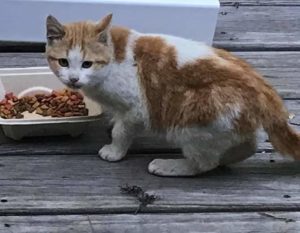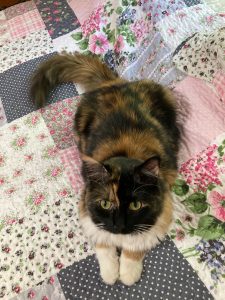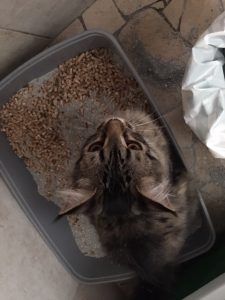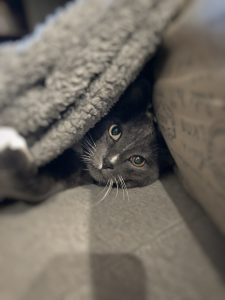 All cats do it—they cough up hairballs—also known as tridrobezoars or bezoars. What are they, where do they come from, and why are we celebrating them?
All cats do it—they cough up hairballs—also known as tridrobezoars or bezoars. What are they, where do they come from, and why are we celebrating them?
If you’ve had a cat for any length of time, you’ve probably found gooey brown, tube-shaped blobs on your floor or furniture  occasionally and wondered where that came from. Or you see your cat actually coughing one up and rush her to the vet—or get on the computer to find out how long your cat has to live.
occasionally and wondered where that came from. Or you see your cat actually coughing one up and rush her to the vet—or get on the computer to find out how long your cat has to live.
You should know that this hacking up of what looks like a whole mouse is usually nothing to be concerned  about. It’s a normal function of a healthy cat—although you could diminish the yakking and hacking process and the experience of stepping on one of those icky, squishy things in the middle of the night.
about. It’s a normal function of a healthy cat—although you could diminish the yakking and hacking process and the experience of stepping on one of those icky, squishy things in the middle of the night.
Here’s why that happens: the cat licks her fur, the fur  collects in her digestive system, and she eventually vomits it up.
collects in her digestive system, and she eventually vomits it up.
If you have cats and you haven’t seen one of these, you probably will at some point. Some cats will pass the fur into the litter box—you know, it comes out the other end. I don’t think I’ve ever found one from Olivia and  she’s furry and a fastidious groomer, so she might be passing hers through her stool.
she’s furry and a fastidious groomer, so she might be passing hers through her stool.
If you can’t stomach those bezoars around your house, you can help mitigate the situation by simply brushing your cat more often. There are also special foods and remedies to help a cat pass the fur so it doesn’t accumulate in their system. Check it out.
By the way, National Hairball Awareness day was April 29, just in case you want to mark it on your calendar for next year.





